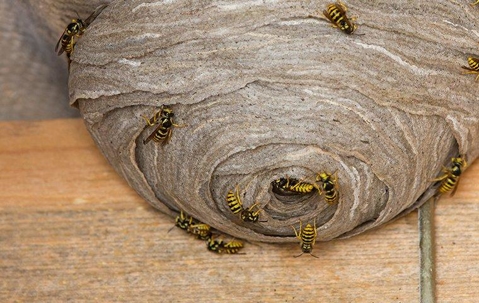Stinging insects can be terrifying when you encounter them in your yard, and wasps are the most alarming by far. These insects pack a punch with painful stings, leaving you wondering if you’d be better off staying indoors. And though there are different types of wasps, yellow jackets are some of the most common and most annoying when trying to enjoy the outdoors.
Your trusted Salt Lake City pest control team at Pest Pro Pest Control wants to help. Here’s how to identify yellow jackets from different types of wasps and how to make getting rid of yellow jackets a breeze.
How To Identify A Yellow Jacket
Yellow jackets are a type of wasp in Salt Lake City, but they have a very distinct look that makes identifying and distinguishing them from other stinging insects easy. Here’s what to look for:
- Yellow and black markings: Yellow jackets have bright yellow stripes on their bodies and typically have a black torso and head with small yellow markings.
- Long, narrow wings: Like most wasps, yellow jackets have long, narrow wings that rest along the length of their bodies when not in use. The wings are typically very light and almost clear in color.
- Identifiable body segments: Unlike other species of stinging insects but similar to most other types of wasps, yellow jackets have segmented bodies with a distinct head, torso, and rear.
Yellow jackets are distinctive, but it’s highly unlikely that you’ll ever see a huge yellow jacket. Most are relatively small. They range in length from 3/8 to 5/8 of an inch long. If you see something larger, it’s not likely one of the different types of yellow jackets common in Salt Lake City. Instead, it’s probably a different stinging insect entirely.
Potential Threats A Yellow Jacket Infestation Could Pose
The primary threat that a yellow jacket poses to you is related to its ability to sting multiple times. For most people, stings will result in sharp pain followed by the development of a red, swollen welt.
However, for those who are sensitive to or allergic to yellow jacket venom, the sting may trigger an allergic reaction requiring medical attention. Creating an effective yellow jacket control plan is essential. The stronger your plan is, the fewer yellow jackets you’ll see in your yard and the safer your friends and family will be.
Factors That Attract Yellow Jackets To Your Yard And Home
Yellow jackets are carnivorous and are primarily driven into your yard and home by food sources. They love to feed on high-protein foods like insects and even the burgers and hot dogs you toss on the grill.
If you know you have a fly problem in your backyard, yellow jackets may build a nest nearby. If you have tons of spiders in your attic, you may end up with a yellow jacket nest in the eaves of your home.
The Safe And Effective Way To Get Rid Of A Yellow Jacket Infestation
The best thing you can do to keep your yard safe and free of yellow jackets is to work with a professional home pest control specialist. They’ll be able to locate any nests and remove them safely so you and your loved ones can enjoy spending time outside.
If you’ve noticed an increase in yellow jackets around your house, don’t wait. Contact Pest Pro Pest Control as soon as possible. Our dedicated team can help with everything from dealing with yellow jacket nests in your yard to managing yellow jacket removal in siding.

